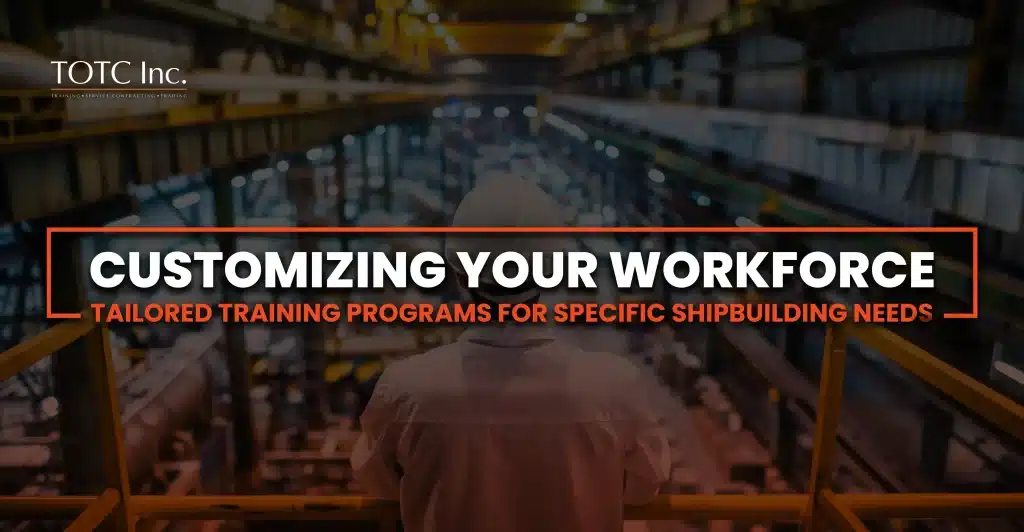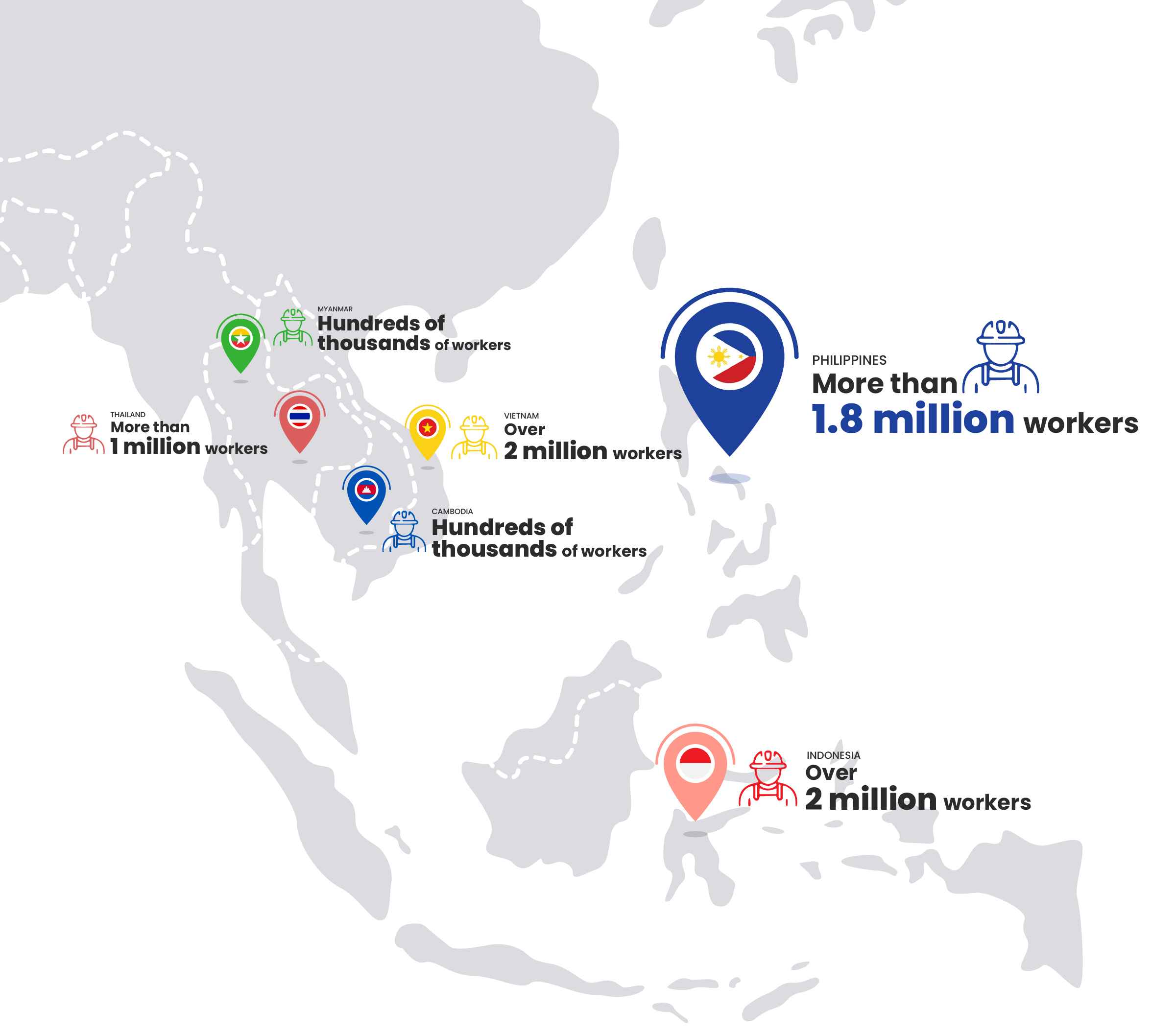The Philippines is a key hub for maritime talent, and shipbuilding workforce training helps Filipinos prepare for global careers. Through programs in welding, fitting, and marine engineering, workers gain technical skills and hands-on experience to succeed. This training not only builds world-class skills but also strengthens the country’s maritime industry and opens opportunities abroad.
This guide explains what you need to know about shipbuilding workforce training and how upskilling can help build your confidence and prepare you to land a career in the maritime industry.
Maritime Skills Development: Learning Shipbuilding in the Philippines to be job-ready is the best preparation for a skilled workforce
As part of maritime skills development, aspiring shipbuilding workers build core skills through specialized education. This includes hands-on shipyard training provided by the Technical Education and Skills Development Authority (TESDA)
Future shipyard workers in the Philippines are encouraged to join skills programs in ship welding, ship fitting, and pipe fitting, as recommended by accredited maritime institutions.
The Standards of Training, Certification and Watchkeeping for Seafarers (STCW Convention) also recommends exploring the following operational skills on board a vessel:
Navigation
Engine room maintenance
Ship repair
Marine engineering
Fire fighting
First aiding
Understanding the purpose of shipbuilding training for Filipino workers
Training in shipbuilding helps Filipino workers stay competitive in the global market by going beyond the usual development programs in the local industry.
It also expands their knowledge of shipyard operations and supports professional growth. This skilled labor attracts foreign investment, boosts the economy, and opens more opportunities for Filipinos.
Why Shipbuilding Remains Labor-Intensive
Shipbuilding is highly labor-intensive as it requires a wide range of industry experts, from skilled welders to marine engineers. In countries with lower labor costs, demand for shipbuilding workers grows as employers take advantage of this benefit.
In fact, millions of people from Southeast Asian countries are employed in the shipbuilding industry.
Despite the high demand for skilled workers in the maritime sector, challenges remain. These labor issues highlight the need for continuous upskilling of shipbuilding workers.
Addressing Skills Gap and Workforce Challenges (Why Upskilling in Shipbuilding Matters)
According to Elena Santos, Head of the Maritime Research and Development Division (MRDD), gaps in workforce preparedness remain despite global changes. Demand for electronics, electrical, and engineering officers on ships is strong, but preparedness levels are still low.
If this shortage continues, the global officer shortfall could exceed to 80,000 by 2026.
Practical Solutions to Address Workforce Challenges in the Maritime Industry
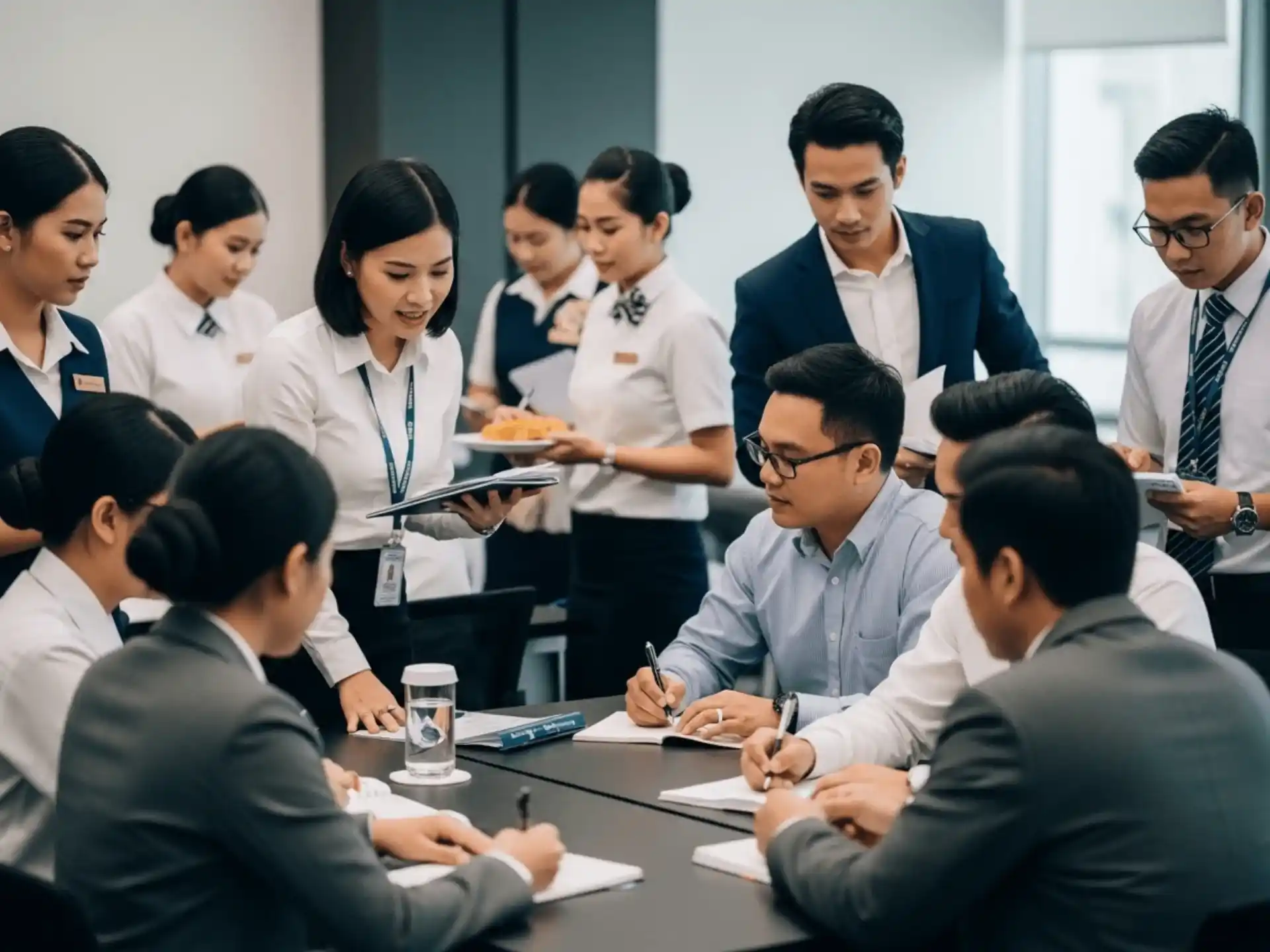
Collaborate on Education and Training Reforms
Stronger collaboration in education and training gives Filipinos more chances to gain the right skills and stay competitive. It also boosts their confidence in being job-ready for the global market.

Incorporate Technology to Enhance Digital Skills
Adapting to new technologies in ship operations improves efficiency and builds workers’ technical skills, preparing them for modern maritime demands.

Implement Work-Based Learning (WBL)
WBL keeps shipbuilders’ skills aligned with industry needs. Partnerships between schools and employers can provide tailored marine training with real-time, hands-on learning.
*All images from this section were AI generated
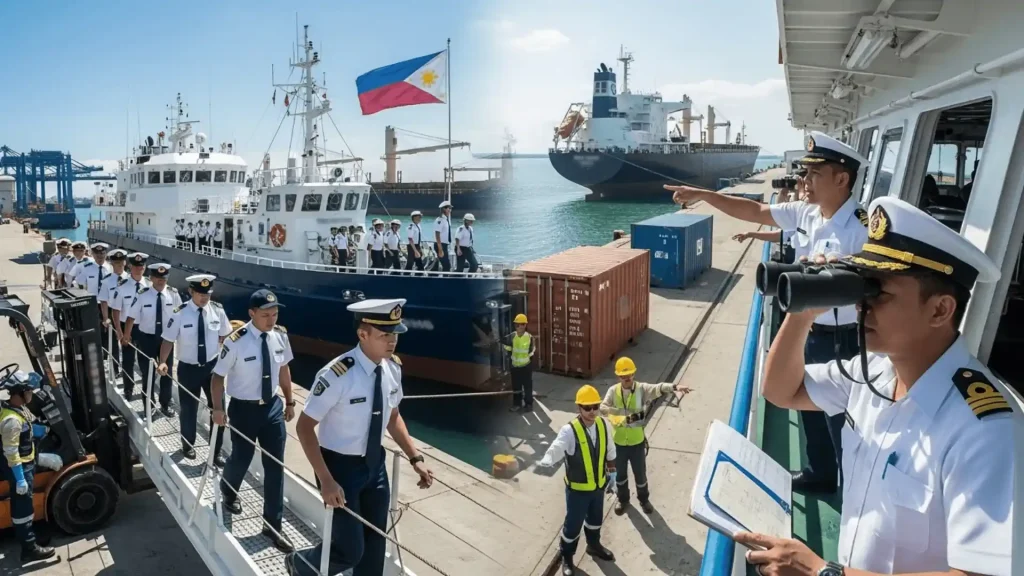
Promote Maritime Careers to the Public
Raising awareness about careers in the maritime industry attracts more talent. Promoting inclusivity and diversity also breaks the misconception that maritime jobs are only for men, encouraging more people to join the sector.
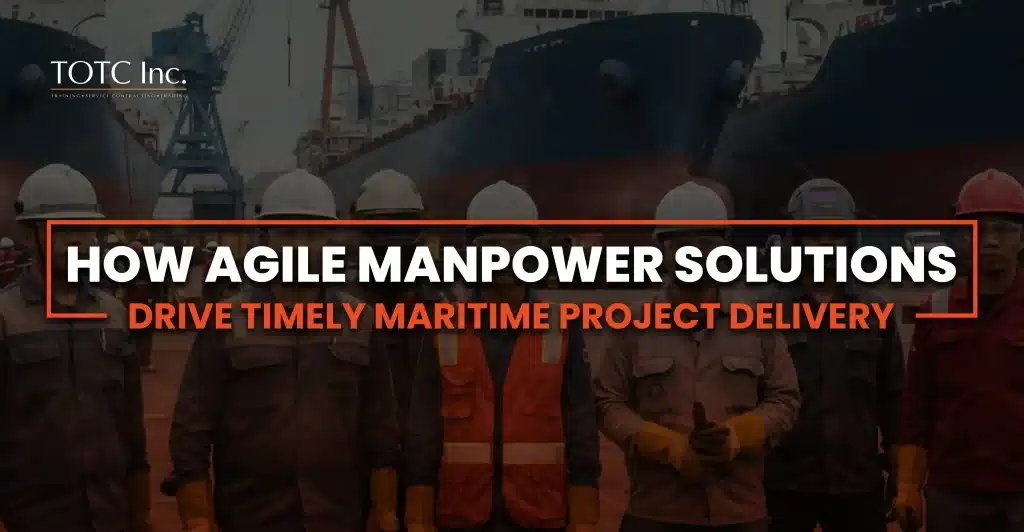
How Agile Manpower Solutions Speed Up Maritime Projects
Discover how agile manpower solutions speed up maritime projects, cut costs, and boost efficiency with skilled workforce deployment.
Read moreShipbuilding Workforce Training in the Philippines
TESDA, in partnership with the Maritime Industry Authority (MARINA), leads tailored training programs to expand the knowledge of shipbuilding workers. These cover both soft skills and problem-solving skills for aspiring seafarers.
1. Safety Training for Shipyard Workers
Basic safety training for shipyard workers is a mandatory requirement for seafarers. It covers survival techniques, fire prevention, first aid, and personal responsibilities. The goal is to teach safety protocols that ensure a secure work environment.
2. Technical Training
Technical training is an important part of workforce development in shipbuilding.
It gives shipyard workers the advanced skills needed to meet both domestic and international shipbuilding and repair (SBSR) standards.
Some accredited marine training centers in the Philippines include:
- Magsaysay Training Center (MTC)
- United Marine Training Center (UMTC)
- Maritime Academy of Asia and the Pacific (MAAP)
- Veritas Maritime Training Center Inc.
- Philippine Center for Advanced Maritime Simulation and Training, Inc. (PHILCAMSAT)
For the complete list, check the official Maritime Training Institutions (MTI) directory.
3. Practical / On-the-Job Shipyard Training
Under the renewed Memorandum of Agreement between TESDA and MARINA in August 2025, new competency-based courses will be offered in ship welding (mild steel and aluminum), ship fitting, and pipe fitting.
These programs target both new and current shipyard employees to boost productivity, safety, and global competitiveness beyond on-the-job shipyard training. At the same time, expanding digital skills in shipbuilding is essential, as technology will continue to shape all industries in the years ahead.
Future trends in shipbuilding workforce development
The shipbuilding industry is moving toward digital advancement, innovation, and sustainability. Future ships will use technologies such as digital twins, carbon capture systems, and fleet management tools to improve welding operations and reduce environmental impact.
A report by Susi Wallner projects the shipbuilding market to grow from USD 160.13 billion (over ₱9 trillion) in 2024 to USD 197.94 billion (over ₱11 trillion) by 2030, with a CAGR of 2.67%.
The global shipbuilding workforce now exceeds 830,000 workers, with more than 30,000 new employees added in 2024, showing steady career growth despite economic challenges.
Key shipbuilding nations include the USA, Germany, India, China, and the Netherlands, with hubs in Singapore, Mumbai, Istanbul, Dubai, and Hamburg driving industry activity.
TOTC Welding Training Services for Shipbuilding and Maritime Industry
At TOTC Inc., we provide welding training led by highly qualified experts. Our instructors bring exceptional credentials, including:
- DNV-certified welding expertise
- Over five years of hands-on teaching experience
- Proud graduates from premier welding schools
- Certified Welding Inspectors (CWI) recognized by the Philippine Welding Society
With this level of expertise, you can be confident that you are learning from some of the best professionals in the industry.
Video source: Freepik
Conclusion
For seafarers, having proper and sufficient training is essential to ensure the safety of the vessel. Through welding and fabrication training, you gain the knowledge to maintain a ship’s structural integrity, operate the correct welding equipment, and follow safety protocols. This allows you to effectively contribute to smooth and efficient operations.
So, whether you are just starting your welding career or already have established skills that you want to further improve, it is important to train under professional welding instructors. This ensures that your skill set is honed not only to meet the demands in the Philippines but also to prepare you for opportunities abroad.
Master Welding and Fabrication Training with TOTC
Get hands-on training from expert instructors and prepare for high-demand careers in the Philippines and abroad.


